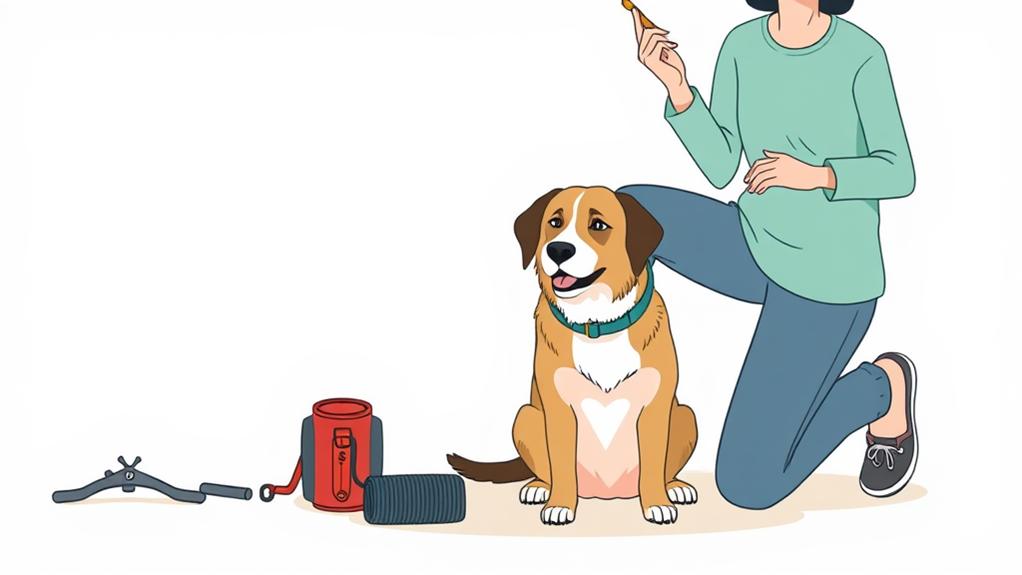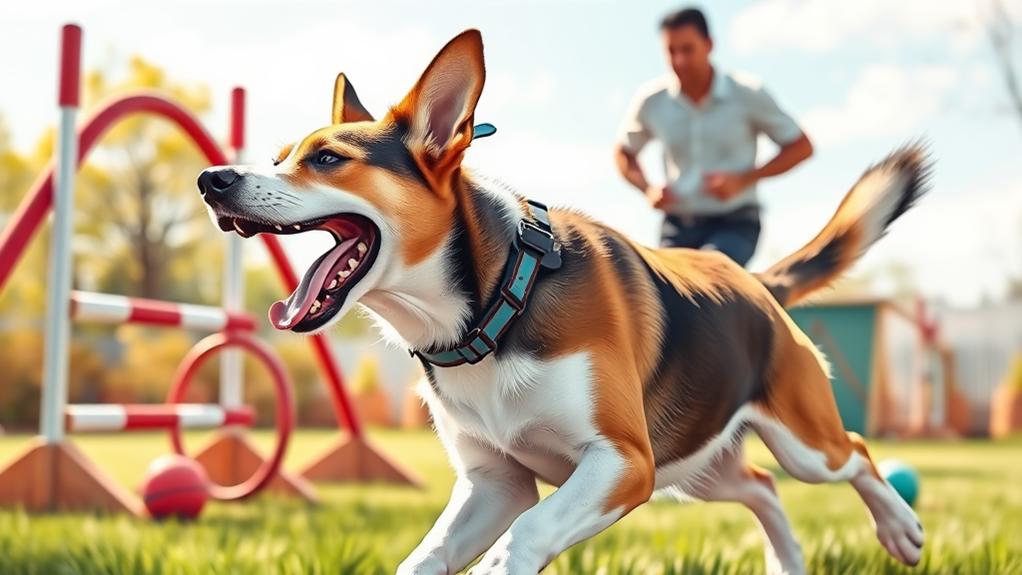You're about to discover the key to transforming your furry friend into a well-behaved and responsive companion. By incorporating daily training routines, you'll establish a strong bond with your dog and open up their full potential. You'll learn how to implement threshold management, food drill training, crate training, balanced exercise, and obedience foundations to create a tailored program that suits your dog's unique needs. But, what makes these routines so effective, and how do you get started? Let's examine the essential elements that will help you achieve canine success, starting with the first pivotal step.
Establish Threshold Management Routine
The first step in establishing a daily training routine for your canine companion is to implement a threshold management routine. You'll want to manage entrances and exits to help your dog learn calm and respectful behavior.
Start by having your dog sit and wait before crossing thresholds, such as doors or gates. Welcome them through the threshold in a relaxed state, avoiding excitement or high energy. Consistency is key, so establish a routine for crossing thresholds and stick to it.
This simple yet effective technique helps you maintain calm and assertive leadership, teaching your dog to respect boundaries and wait for permission to enter or exit. By doing so, you'll set the stage for a well-behaved and well-trained dog.
Implement Food Drill Training

Implementing a food drill training program helps you establish a stronger bond with your dog, built on trust, respect, and clear communication. By allocating your dog's daily food into a treat pouch, you'll be able to reward good behavior throughout the day.
This approach encourages your dog to focus on you and respond promptly to commands. As the day comes to a close, you'll provide any remaining food in a bowl, but only after your dog has demonstrated a sit and stay. This routine reinforces calm and respectful behavior when accessing food, teaching your dog to value every meal and associate good manners with rewards.
Consistency is key, so stick to this routine daily.
Master Crate Training Essentials
Crate training is a game-changer for dog owners, and mastering its essentials is crucial for a well-behaved and well-adjusted pet. You'll want to provide a safe and comfortable crate environment that allows your dog to decompress and settle. By utilizing the crate, you can manage your dog's freedom and behavior, setting them up for success.
Establish a routine: Use the crate to establish a daily routine that works for you and your dog.
Start with short periods: Begin with short periods of time in the crate and gradually increase the duration as your dog becomes more comfortable.
Make it a safe space: Make the crate a safe space by adding comfortable bedding and a familiar toy or two.
Balance Physical and Mental Exercise

With physical and mental exercise playing a crucial role in a dog's overall health and behavior, it's essential you strike the right balance between the two.
You need to address your dog's physical exercise needs, such as walks and playtime, while also providing mental stimulation activities, like puzzle toys and scent games. Guarantee your dog gets adequate exercise to promote better behavior, as a tired dog is more receptive to training.
Adapt exercise routines to your dog's individual requirements, considering age, breed, and energy level. By balancing physical and mental exercise, you'll help your dog lead a happy, healthy life and lay the groundwork for successful training. Regularly assess and adjust your dog's exercise routine to confirm it remains effective and engaging.
Develop Obedience Training Foundation

As you establish a strong bond with your dog, teaching foundational obedience commands becomes essential for successful training. You'll want to start with simple commands like sit, stay, and come, and gradually build up to more complex ones like heel and place. Consistency is key, so set aside time each day for training sessions.
Here are three tips to get you started:
- Set clear expectations: Establish clear communication with your dog by using positive reinforcement and consistent commands.
- Build trust: Foster a strong relationship with your dog by being patient, calm, and gentle during training sessions.
- Practice routinely: Make training a daily habit to guarantee your dog's safety and reliability in all situations.
Conclusion
You've established a solid foundation for your dog's success by implementing a daily training routine that includes threshold management, food drill training, crate training, balanced exercise, and obedience foundations. Consistency and patience are key, so stick to your routine and celebrate small victories along the way. With time and positive reinforcement, you'll unleash liberate your dog's full potential and enjoy a well-behaved, responsive, and confident companion. Your hard work will pay off!



